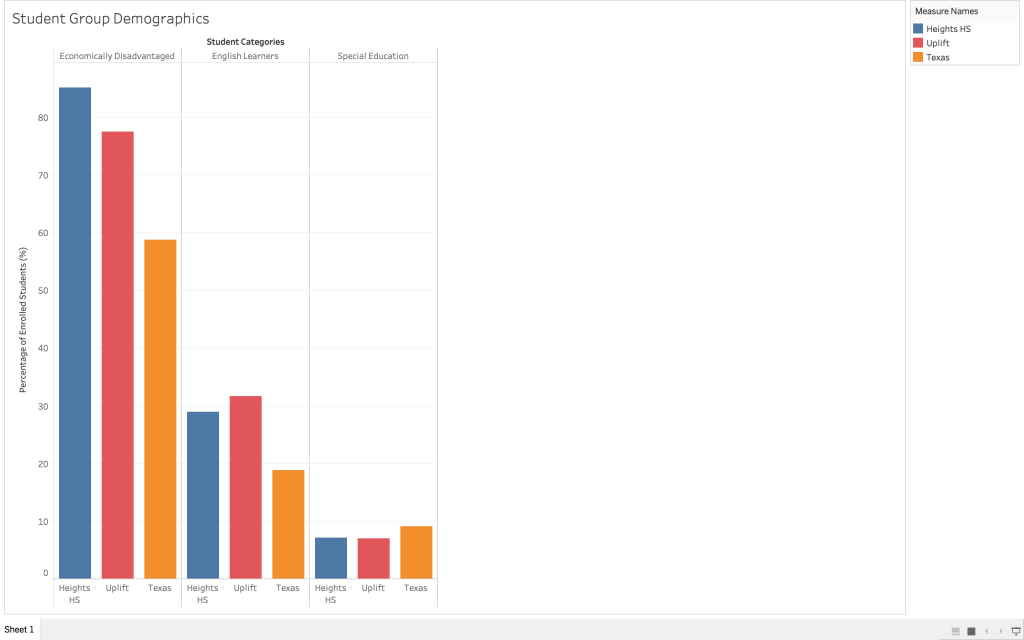“We live in a world in which we need to share responsibility. It’s easy to say ‘It’s not my child, not my community, not my world, not my problem.‘ Then there are those who see the need and respond. I consider those people my heroes.”
– Fred Rogers
Culturally relevant pedagogy is critical to creating an inclusive and effective learning environment. So is an educator’s preparation for and treatment of students with exceptionalities.

At times, teaching can feel like an impossible task of reaching everyone and every one all at once. Teaching every student the same material the same way is not just unrealistic; it is impossible. A student’s way of learning can be as unique as their fingerprint, and instructors must enter the classroom prepared to learn this educational fingerprint as well as to consistently collect data that may inform future planning.
Exceptional students, or those students that strongly benefit from specific, additional learning supports, are a foundational component of any classroom that a teacher must prepare for. This demands that instructors be in constant communication and cooperation with inclusionists and other co-teachers that can provide the resources students need.
Preparing and administering alternative teaching methods ensures a better likelihood of success for students with exceptionalities, but these preparations will undoubtedly benefit every student in the classroom. More instructional methods, practices and strategies means more opportunities to resonate with the learning needs of the maximum number of students.
Before I stepped into the classroom for the first time, I truthfully had no idea how many supports teachers needed to administer in order to meet the needs of all students. I thought that lecturing in front of the classroom in a mono-method format was the standard. I quickly came to realize just how wrong I was, and saw how effective a Universal Design for Learning approach, in tandem with appropriate accommodations and modifications, could transform classrooms for the benefit of all students.
Below are just a couple of examples from my first year in the classroom.
Jose*
Jose struggled mightily with maintaining his focus in the classroom and often found himself up and wandering about the room when he wasn’t holding off-task conversations with his tablemates. It steadily grew apparent that Jose was avoiding tasks that required reading and writing. It took some time to gain Jose’s trust, but as the relationship grew he was more comfortable explaining how he found reading tremendously difficult, and struggled to translate his thoughts onto the page. Ultimately, we developed a system to check in with Jose at the start of each assignment to talk through the task on an individual level. Regular check-ins and opportunities to vocalize his thoughts in response to a question, rather than requiring written responses, proved successful in bringing Jose back into the fold of the class.
Jessica*
Jessica frequently found herself overwhelmed by assignments and needed additional process time to collect her thoughts and produce her best work. Distractions in the classroom were difficult to avoid and often further inhibited Jessica’s productivity. Reducing these distractions through priority seating and the use of headphones helped Jessica focus, and encouraging her with a low-pressure environment free of time restrictions created an environment in which she could work more effectively.
Taylor*
Taylor was always an eager participant in class, but often fell prone to vocal outbursts during teacher modeling and struggled to focus when seated next to peers during independent work time. Demonstrating care and respect to Taylor made the biggest difference with time as my relationship with Taylor grew stronger and we developed a mutual understanding of each others’ needs and expectations. Earning Taylor’s respect greatly reduced the number of vocal outbursts, and our honest conversations revealed that Taylor preferred to work independently in the hallway whenever possible in order to avoid distractions from peers.
